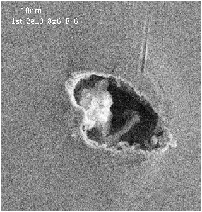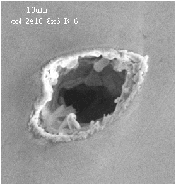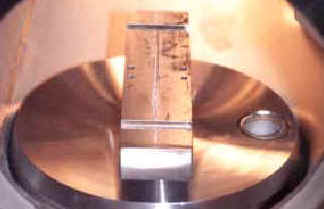|
|
| Challenge: |
The high luminosity performance of the LHC
relies on storing, accelerating, and colliding beams with unprecedented
intensities. The transverse energy density of the nominal beam is 1000
times higher than previously achieved in proton storage rings. Tiny
fractions of the stored beam suffice to quench a super-conducting LHC
magnet or even to destroy parts of the accelerators. Note that a 10-5
fraction of the nominal LHC beam will damage Copper. The energy in the two
LHC beams is sufficient to melt almost 1 ton of copper!
|
|
Examples of material damage from existing
beams (left pictures: entry and exit of beam in spoiler)
    
Courtesy: SLAC (P. Tenenbaum, F.J. Decker), CERN (G.
Stevenson)
|
| Solution:
|
The powerful LHC collimation system
will protect the accelerator against unavoidable regular and irregular
beam loss. Two insertions (IR3 and IR7) are dedicated to collimation and
will be equipped with about 54 movable, two-sided collimators. These
regions will be among the most radioactive in the LHC.
|
| Project: |
The effort to design, build, and operate the
powerful LHC collimation system involves a number of different
divisions and groups at CERN. The LHC collimation project was set-up
in October 2002 to coordinate all activities concerning the LHC
collimation system. |